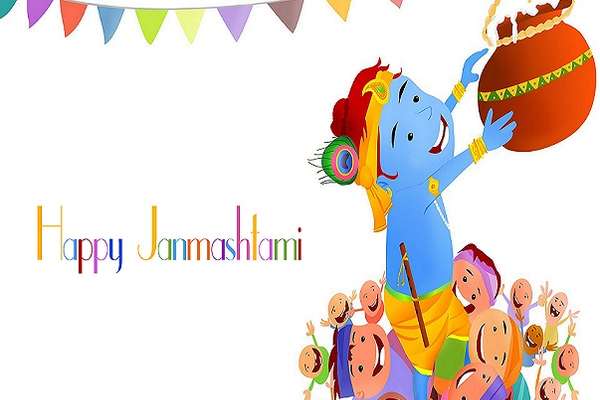
JANMASHTAMI: Symbolic Of Motherhood
15 Sep 2015 | 4 min Read
Baby Chakra
Author | 501 Articles
This morning, I had to dress up my daughter for Janmashtami celebrations at her school. I chose to dress her up as Little Krishna and quite expectedly, several people asked me why didn’t I dress her up like a girl in ghaghra-choli or something similar (indicating Radha and Lord Krishna’s several female friends). The answer is simple – Janmashtami is celebrated as the birthday of Lord Krishna (also known as Gopal, Kanhaiyya, Kanha) and to every mother, her son/ daughter is as dear as Lord Krishna was to Ma Yashoda. Same applies for me too…
The warmth and spirit of an Indian festival lies in the story behind the celebration. Among Indian festivals, I find Janmashtami most secular in feeling, in the sense that it’s the celebration of motherhood and every mother on the planet can relate to this story. The love, the fun, the worry, and that irrevocable, indispensable connection that develops between a mother and her child is the crux of Janmashtami and the folk tales of ‘Bal Gopal in Vrindaavan’. While Janmashtami is his birthday, his childhood stories are synonymous with Yashoda, Nandlal and the people of Vrindaavan, where they lived. In some communities of India, a symbolic birth of the Lord is performed and some even have a crib for the little lord. The aspects, that struck a chord with me are:
1. Lord Krishna was separated from his biological parents, in a divine effort to secure his life. He was delivered at the doorstep of Yashoda (fondly known as Yashoda maiyya) and Nandlal, who, though are his adoptive parents but are always remembered as his own parents in every sense of the word. Thus shows that the fond, eternal bond between her mother and child may not necessarily be initiated by an umbilical cord connection alone.
2. At meal times, young Krishna would trouble ‘maiyya’ by running around and escaping her, just like most of our children do. Knowing very well that ‘maiyya’ is angry with him, he would fetch his friends and build a human ladder upto the pitcher where she had stored butter (known as the Lord’s favourite food). As one can guess, he ate some with his friends and spilt around a whole lot. This, appealed to me as the concept of self-led weaning that mothers of toddlers strive hard at. Not just that, he would then offer that mischievous smile to ‘maiyya’ with a mouthful of butter, smothered all over his face, seeking acceptance of the act. I can literally see my daughter doing this every day. If I offer her food she would refuse but, when left alone, will spill it on the table, outside the plate, on her dress and then eat it the way she likes! Not to miss, will offer me a cute “Mamma…finish!” smile! This innocence is priceless, isn’t it?
3. Yashoda would tie Kanha up with a rope against a wall, as punishment for his relentless pranks in Vrindaavan. While the neighbours felt that she was being heartless, it was the mother’s love that compelled her to stop him from wrong doings. On returning home angry, Gopal found that ‘maiyya’ had skipped her own meal too. So, even while she is bleeding inside, a mother alone has the capacity and the strong will to correct her child, even by force, if required. We too, tend to advise other mothers with regard to parenting their children. I guess, as mothers we know ,in our hearts, that ‘the mother knows best’ when the child needs to be rebuked or spanked. And…the child understands that very well. None of us hate our mothers for what she said when she was mad at us, do we??
So take it easy, enjoy your child’s innocent mistakes as long as they last and don’t be too harsh on yourself, as long as you know that you are reasonable… Enjoy motherhood! Enjoy Janmashtami!
A


Suggestions offered by doctors on BabyChakra are of advisory nature i.e., for educational and informational purposes only. Content posted on, created for, or compiled by BabyChakra is not intended or designed to replace your doctor's independent judgment about any symptom, condition, or the appropriateness or risks of a procedure or treatment for a given person.
